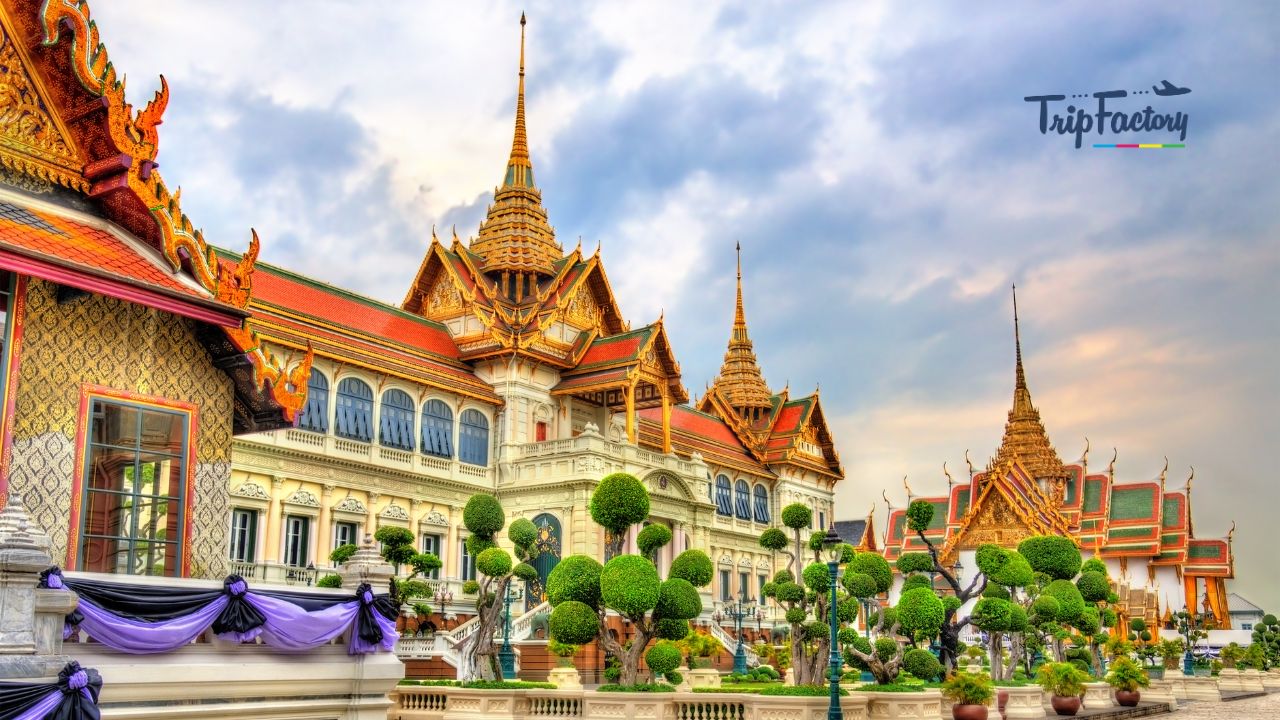The Royal Grand Palace in Bangkok stands as one of Thailand’s most iconic landmarks, a place where history, culture, and architectural brilliance converge. Built in 1782, the Grand Palace was the official residence of the Kings of Siam and later Thailand, serving as the heart of royal and administrative affairs for over 150 years. Even though the Thai royal family no longer resides within its walls, the Grand Palace remains a significant site for ceremonial events and a must visit destination for anyone exploring Bangkok.
Table of Contents
A Glimpse into the Grandeur of the Grand Palace
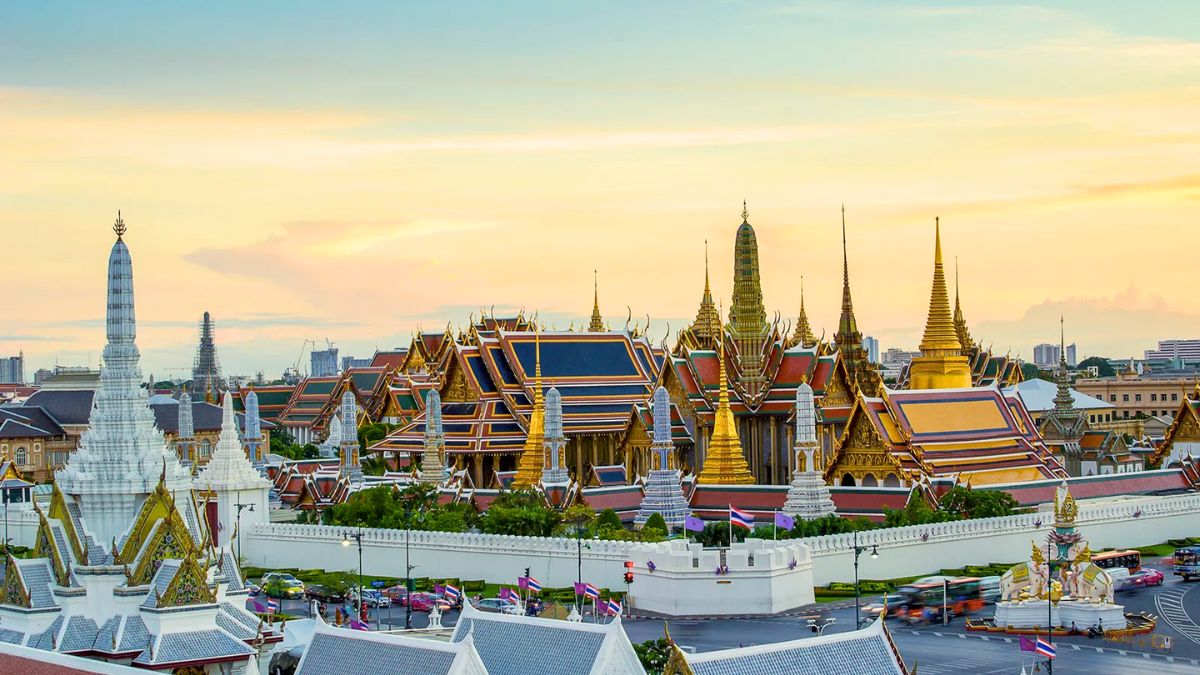
Nestled in the heart of Bangkok, the Grand Palace complex spans over 200,000 square meters, featuring an extraordinary blend of traditional Thai, European, and Southeast Asian architectural styles. The intricate details of its structures showcase Thailand’s rich craftsmanship, making it a true marvel of design and aesthetics.
Within the palace grounds, visitors can explore a series of halls, pavilions, and gardens, all adorned with gold leaf, vibrant murals, and exquisite mosaics. The walls of the Grand Palace tell the story of the Ramakien, Thailand’s national epic, through breathtaking paintings that depict its legendary tales.
The Layout of the Palace
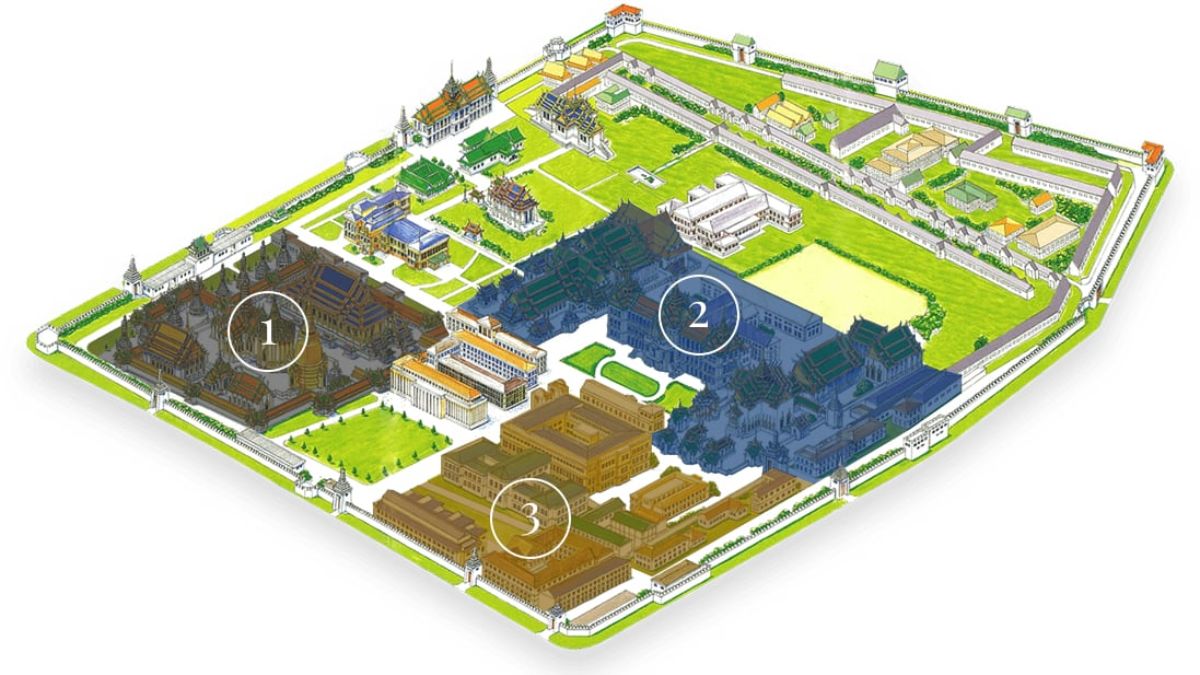
The Grand Palace is divided into four main areas: the Outer Court, the Middle Court, the Inner Court, and the Temple of the Emerald Buddha (Wat Phra Kaew). Each of these sections has played an essential role in the history and governance of the Thai monarchy.
The Outer Court
The Outer Court begins at the Wiset Chai Si Gate and extends to the Phiman Chai Si Gate. In the past, this area housed key administrative offices such as the Bureau of the Royal Household and the Office of His Majesty’s Principal Private Secretary. Today, it still serves as the location for state affairs, maintaining its historical significance.
Aslo Read: Siam Ocean World
The Middle Court
This section, situated between Phiman Chai Si Gate and Sanam Ratchakit Gate, is where royal ceremonies take place. Key structures within the Middle Court include:
- Phra Maha Monthien Buildings: These buildings serve as the official residence of the King and are used for important state events.
- Chakri Maha Prasat Hall: A stunning mix of Thai and European architecture, designed by British architect John Clunish, featuring Italian Renaissance-style lower floors with traditional Thai-style roofs.
- Phra Maha Prasat Buildings: Used for royal audiences and state functions, these buildings are some of the most well-preserved in the palace complex.
- Siwalai Garden Quarter: A beautifully landscaped area featuring various pavilions and shrines.
The Inner Court
Historically, this area was reserved for the King’s consorts, daughters, and female servants, essentially operating as a city within the palace. Men were strictly forbidden from entering except for the King himself. Though no longer in use as a royal residence, the Inner Court remains off-limits to the public.
The Temple of the Emerald Buddha (Wat Phra Kaew)
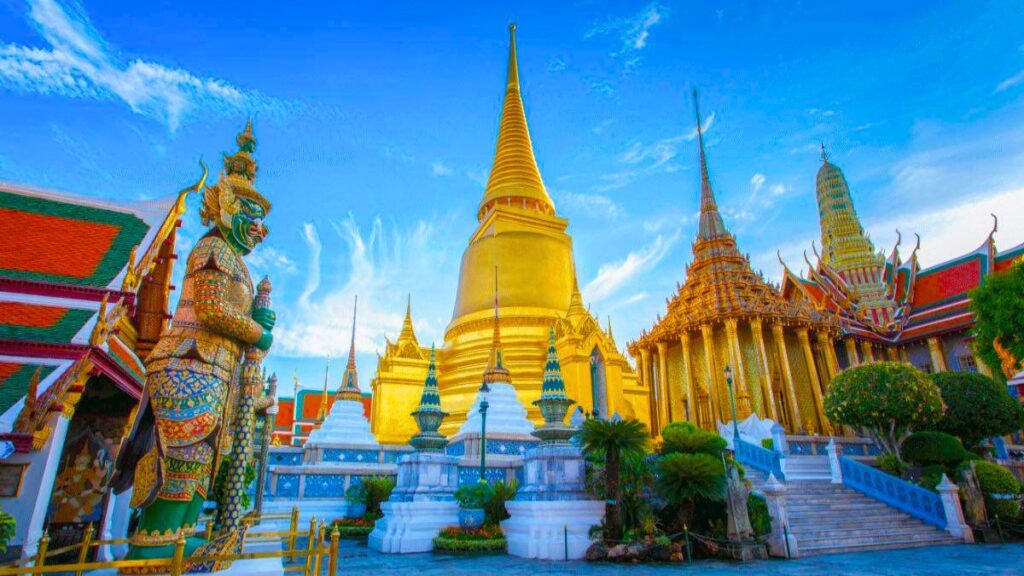
One of the most sacred sites in Thailand, the Temple of the Emerald Buddha (Wat Phra Kaew) enshrines the revered Emerald Buddha, a statue carved from a single piece of jade. This statue, believed to date back to the 14th century, is considered the protector of Thailand. The King of Thailand personally changes the robes of the Emerald Buddha three times a year to mark the seasonal shifts a ritual of great religious importance.
Architectural Splendor of the Grand Palace
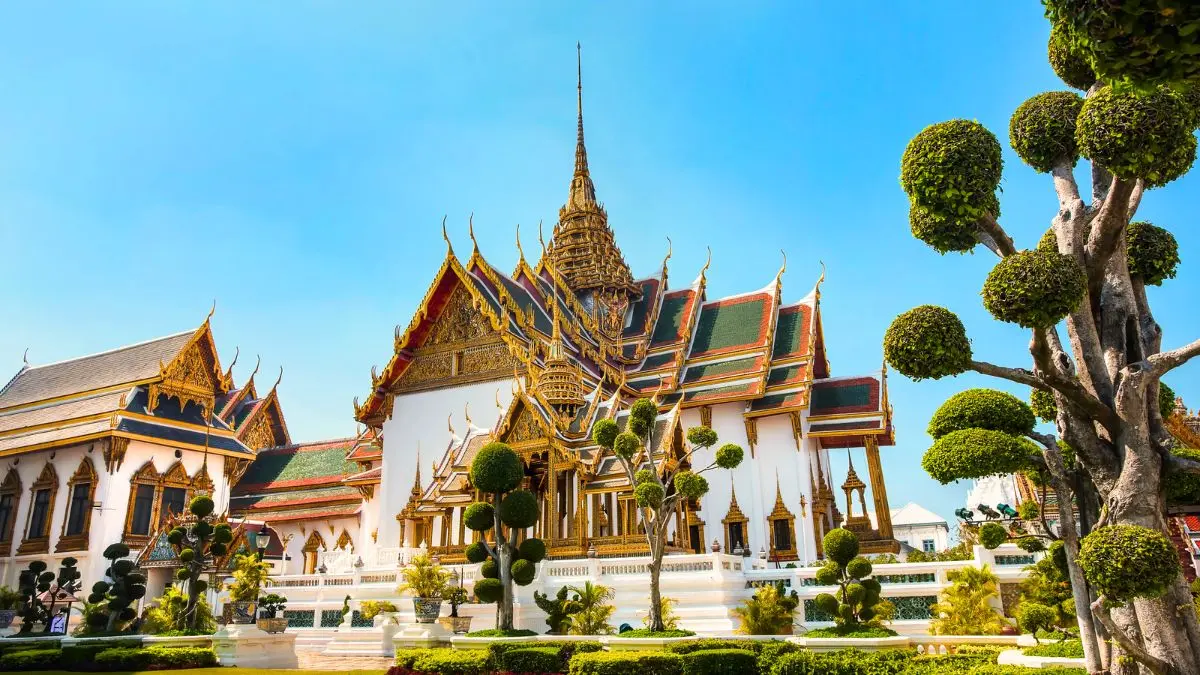
The Grand Palace is a masterpiece of architecture, combining influences from various eras and regions. Key architectural elements include:
- Ornate gilded rooftops and multi-tiered spires that give the palace a distinctive Thai aesthetic.
- Intricate mosaic and stucco decorations that embellish the walls and ceilings.
- European-inspired elements seen in structures like the Chakri Maha Prasat Hall, reflecting Thailand’s openness to artistic exchange with the West.
- Prasat-style rooftops, featuring elongated and elegantly curved designs, a hallmark of Thai architecture.
Historical Significance and Ceremonial Importance
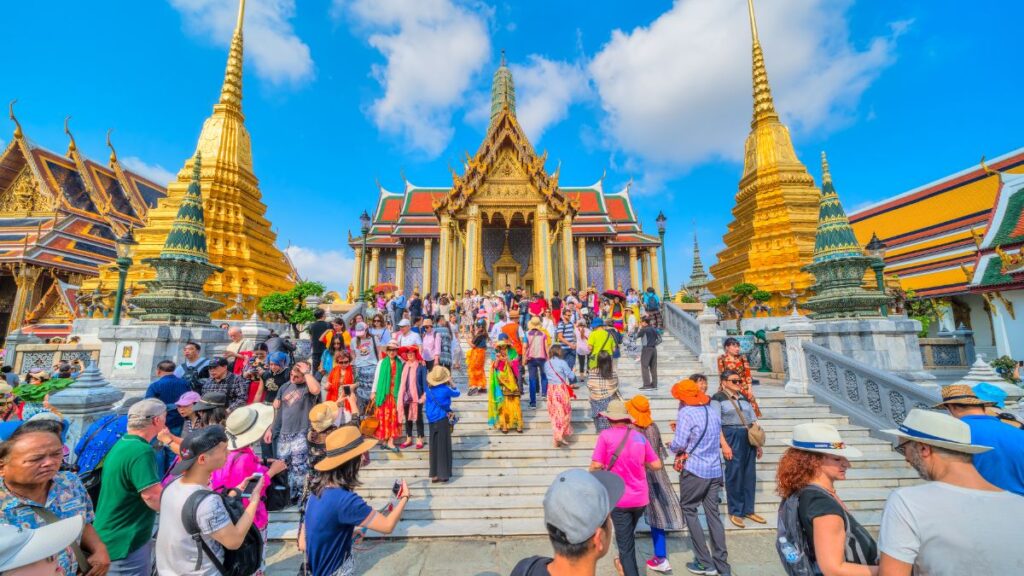
The Grand Palace has witnessed Thailand’s most significant historical events, including the coronation ceremonies of Thai monarchs. It continues to be used for important occasions, such as royal funerals and state banquets. Notably, it served as the site for the grand funeral of King Rama IX in 2017, an event marked by immense national mourning and elaborate royal traditions.
Also Read: Safari World & Marine Park
Practical Information for Visitors
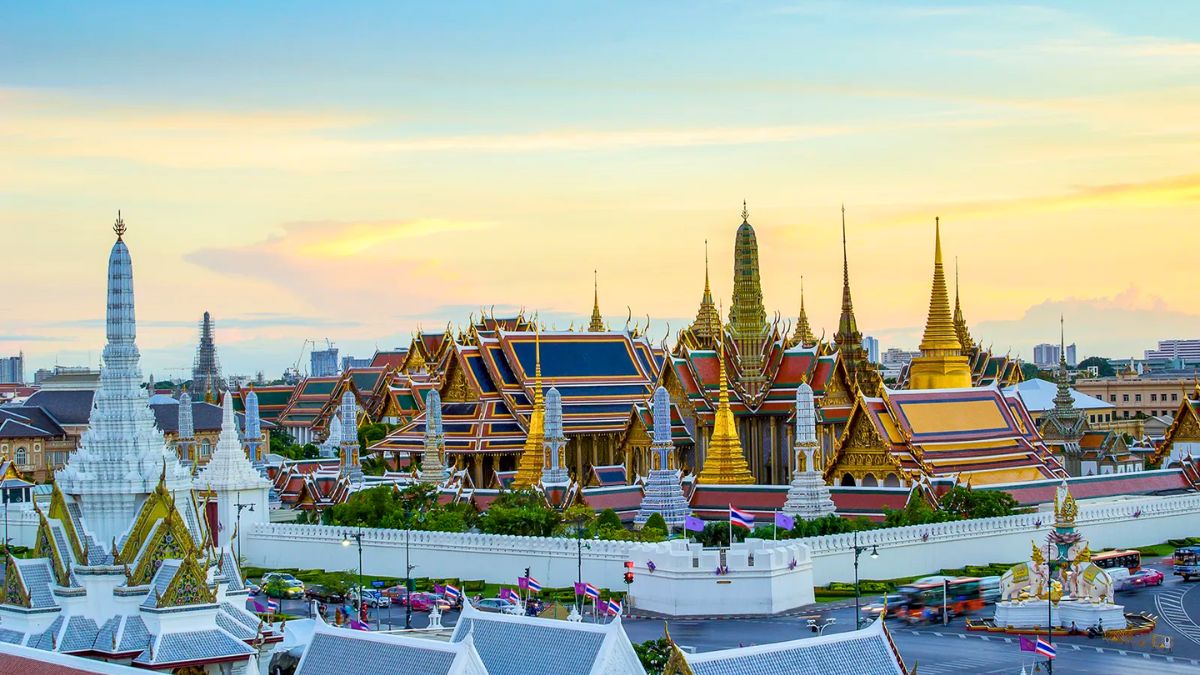
Visiting Hours & Entry Fees
- Opening Hours: 8:30 AM – 3:30 PM (Daily)
- Entry Fee: 500 Baht (~INR 1,030), which includes access to Wat Phra Kaew and Queen Sirikit Museum.
- Location: Na Phra Lan Road, Old City (Rattanakosin), Phra Nakhon, Bangkok, Thailand.
Dress Code
As the Grand Palace is a sacred site, a strict dress code is enforced. Visitors must wear:
- Long pants or skirts (no shorts, miniskirts, or ripped jeans).
- Sleeved shirts (no tank tops or see-through clothing).
- Proper footwear (sandals and flip-flops require socks).
If improperly dressed, visitors can rent appropriate clothing near the entrance for a deposit.
How to Reach
- BTS Skytrain: Take the BTS to Saphan Taksin Station, then a Chao Phraya Express Boat to Tha Chang Pier.
- Taxi/Tuk-Tuk: Easily available throughout Bangkok, though fares should be negotiated in advance.
- Public Bus: Several routes stop near the Grand Palace, making it an economical travel option.
Best Time to Visit
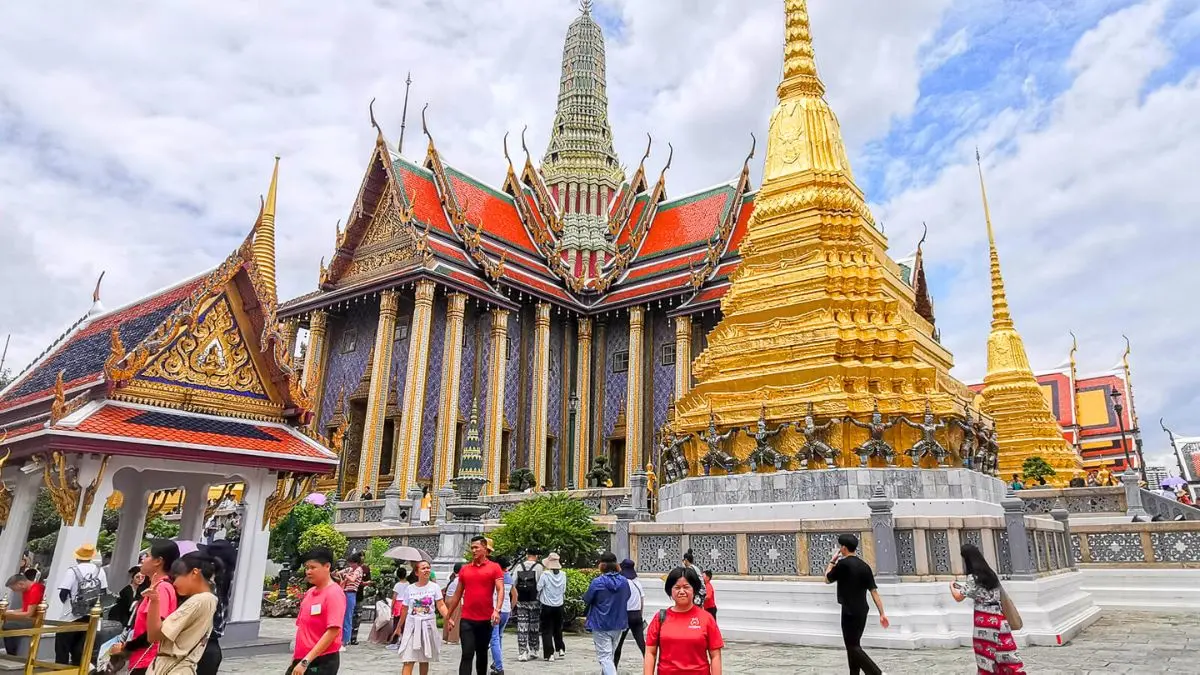
The ideal time to visit is between November and February, when the weather is cooler and more comfortable for exploring. Arriving early in the morning or late in the afternoon helps avoid the midday heat and large crowds.
Nearby Attractions
For those wanting to extend their visit, the Grand Palace is conveniently close to several must-visit attractions:
- Wat Arun (Temple of Dawn) – A striking riverside temple known for its towering spires.
- Bangkok National Museum – Showcasing Thai art, history, and cultural artifacts.
- Tha Tien Market – A bustling marketplace offering local street food and souvenirs.
- Flower Market (Pak Khlong Talat) – Bangkok’s largest and most vibrant flower market.
Conclusion
The Royal Grand Palace in Bangkok is more than just a tourist attraction; it is a window into Thailand’s royal past, cultural heritage, and architectural mastery. Whether you’re marveling at the intricacies of Wat Phra Kaew, walking through the historic halls of the Chakri Maha Prasat, or absorbing the grandeur of the sprawling courtyards, the Grand Palace offers an unforgettable experience.
For travelers seeking to immerse themselves in Thailand’s rich history, visiting the Grand Palace is an absolute must. Ensure you plan your trip well, dress appropriately, and take the time to appreciate the unparalleled beauty and significance of this majestic landmark.
Aslo Read: Siam Park Bangkok
Frequently Asked Questions
Why is the Grand Palace Bangkok famous?
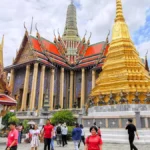
The Grand Palace is famous for its stunning architecture, rich history, and cultural significance. It served as the official residence of Thai kings for over 200 years and houses the revered Temple of the Emerald Buddha (Wat Phra Kaew), which is one of Thailand’s most sacred Buddhist sites.
Is the Grand Palace Bangkok worth it?
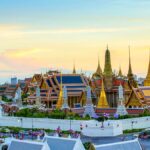
Yes, visiting the Grand Palace is absolutely worth it! The intricate designs, golden spires, and detailed murals make it a breathtaking experience. It’s one of Bangkok’s top attractions, offering a deep dive into Thai history and culture.
Can I wear jeans to the Grand Palace Bangkok?
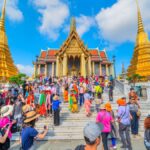
Yes, you can wear jeans, but they must be long and not ripped or distressed. The dress code is strict—shoulders and knees must be covered. Sleeveless tops, shorts, and skirts above the knee are not allowed. If you’re not dressed appropriately, you can rent or buy clothes at the entrance.
How much is the ticket for the Grand Palace Bangkok?
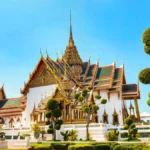
As of recent updates, the entrance fee is 500 THB (approximately $14 USD). The ticket includes access to Wat Phra Kaew and some museum exhibits inside the palace grounds.
What is an interesting fact about the Grand Palace?
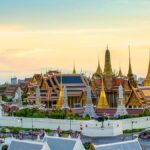
One interesting fact is that no Thai monarch has lived in the Grand Palace since 1925. Although it was once the royal residence, the current Thai King resides elsewhere, and the palace is now primarily used for ceremonies and official events.

